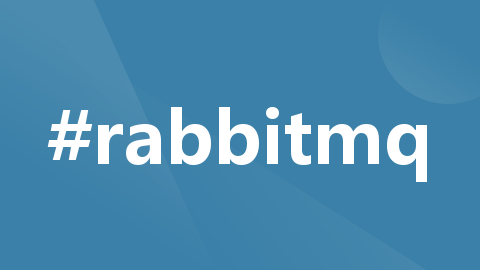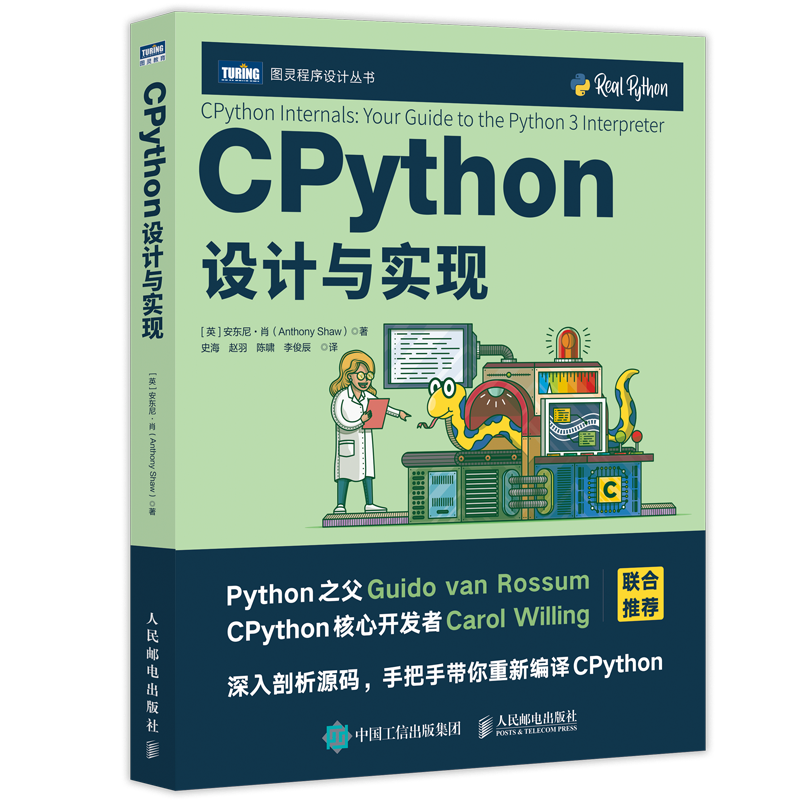
Springboot-RabbitMQ 消息队列使用
RabbitMQ中几个重要的概念
·
一、概念介绍:
RabbitMQ中几个重要的概念介绍:
-
Channels:信道,多路复用连接中的一条独立的双向数据流通道。信道是建立在真实的 TCP 连接内地虚拟连接,AMQP 命令都是通过信道发出去的,不管是发布消息、订阅队列还是接收消息,这些动作都是通过信道完成。因为对于操作系统来说建立和销毁 TCP 都是非常昂贵的开销,所以引入了信道的概念,以复用一条 TCP 连接。
-
Exchanges:交换器,用来接收生产者发送的消息并将这些消息路由给服务器中的队列。
- 交换机类型主要有以下几种:
- Direct Exchange(直连交换机):这种类型的交换机根据消息的Routing Key(路由键)进行精确匹配,只有绑定了相同路由键的队列才会收到消息。适用于点对点的消息传递场景。
- Fanout Exchange(扇形交换机):这种类型的交换机采用广播模式,它会将消息发送给所有绑定到该交换机的队列,不管消息的路由键是什么。适用于消息需要被多个消费者处理的场景。
- Topic Exchange(主题交换机):这种类型的交换机支持基于模式匹配的路由键,可以使用通配符*(匹配一个单词)和#(匹配零个或多个单词)进行匹配。适用于实现更复杂的消息路由逻辑。
- Headers Exchange(头交换机):这种类型的交换机不处理路由键,而是根据发送的消息内容中的headers属性进行匹配。适用于需要在消息头中携带额外信息的场景。
-
Queues:消息队列,用来保存消息直到发送给消费者。它是消息的容器,也是消息的终点。一个消息可投入一个或多个队列。消息一直在队列里面,等待消费者连接到这个队列将其取走。
二、引入依赖:
<dependency>
<groupId>org.springframework.boot</groupId>
<artifactId>spring-boot-starter-amqp</artifactId>
</dependency>
三、添加配置信息
spring:
rabbitmq:
host: 127.0.0.1
port: 5672
username: guest
password: guest
listener:
simple:
acknowledge-mode: manual # 手动提交
四、Direct Exchange(直连交换机)模式
1、新建配置文件 RabbitDirectConfig类
package com.example.direct;
import org.springframework.amqp.core.Binding;
import org.springframework.amqp.core.BindingBuilder;
import org.springframework.amqp.core.DirectExchange;
import org.springframework.amqp.core.Queue;
import org.springframework.context.annotation.Bean;
import org.springframework.context.annotation.Configuration;
/**
* @author wasin
* @version 1.0
* @date 2024/6/4
* @description: 直连交换机--这种类型的交换机根据消息的Routing Key(路由键)进行精确匹配,
* 只有绑定了相同路由键的队列才会收到消息。适用于点对点的消息传递场景
*/
@Configuration
public class RabbitDirectConfig {
/**
* 队列名称
*/
public static final String QUEUE_MESSAGE ="QUEUE_MESSAGE";
public static final String QUEUE_USER ="QUEUE_USER";
/**
* 交换机
*/
public static final String EXCHANGE="EXCHANGE_01";
/**
* 路由
*/
public static final String ROUTING_KEY="ROUTING_KEY_01";
@Bean
public Queue queue01() {
return new Queue(QUEUE_MESSAGE, //队列名称
true, //是否持久化
false, //是否排他
false //是否自动删除
);
}
@Bean
public Queue queue02() {
return new Queue(QUEUE_USER, //队列名称
true, //是否持久化
false, //是否排他
false //是否自动删除
);
}
@Bean
public DirectExchange exchange01() {
return new DirectExchange(EXCHANGE,
true, //是否持久化
false //是否排他
);
}
@Bean
public Binding demoBinding() {
return BindingBuilder.bind(queue01()).to(exchange01()).with(ROUTING_KEY);
}
@Bean
public Binding demoBinding2() {
return BindingBuilder.bind(queue02()).to(exchange01()).with(ROUTING_KEY);
}
}
2、添加消息生产者 Producer类
package com.example.direct;
import com.example.entity.User;
import org.springframework.amqp.rabbit.core.RabbitTemplate;
import org.springframework.stereotype.Component;
import javax.annotation.Resource;
/**
* @author wasin
* @version 1.0
* @date 2024/6/4
* @description:
*/
@Component
public class Producer {
@Resource
RabbitTemplate rabbitTemplate;
public void sendMessageByExchangeANdRoute(String message){
rabbitTemplate.convertAndSend(RabbitDirectConfig.EXCHANGE, RabbitDirectConfig.ROUTING_KEY,message);
}
/**
* 默认交换器,隐式地绑定到每个队列,路由键等于队列名称。
* @param message
*/
public void sendMessageByQueue(String message){
rabbitTemplate.convertAndSend(RabbitDirectConfig.QUEUE_MESSAGE,message);
}
public void sendMessage(User user){
rabbitTemplate.convertAndSend(RabbitDirectConfig.QUEUE_USER,user);
}
}
3、添加消息消费者
package com.example.direct;
import com.example.entity.User;
import org.springframework.amqp.rabbit.annotation.RabbitListener;
import org.springframework.stereotype.Component;
/**
* @author wasin
* @version 1.0
* @date 2024/6/4
* @description:
*/
@Component
public class Consumer {
@RabbitListener(queues = RabbitDirectConfig.QUEUE_USER)
public void onMessage(User user){
System.out.println("收到的实体bean消息:"+user);
}
@RabbitListener(queues = RabbitDirectConfig.QUEUE_MESSAGE)
public void onMessage2(String message){
System.out.println("收到的字符串消息:"+message);
}
}
4、 测试
package com.example;
import com.example.entity.User;
import com.example.direct.Producer;
import com.example.fanout.FanoutProducer;
import com.example.topic.TopicProducer;
import org.junit.jupiter.api.Test;
import org.springframework.boot.test.context.SpringBootTest;
import javax.annotation.Resource;
@SpringBootTest
class SpringbootRabbitMqApplicationTests {
@Resource
Producer producer;
@Test
public void sendMessage() throws InterruptedException {
producer.sendMessageByQueue("哈哈");
producer.sendMessage(new User().setAge(10).setName("wasin"));
}
}
五、Topic Exchange(主题交换机)模式
1、新建RabbitTopicConfig类
package com.example.topic;
import org.springframework.amqp.core.*;
import org.springframework.context.annotation.Bean;
import org.springframework.context.annotation.Configuration;
/**
* @author wasin
* @version 1.0
* @date 2024/6/4
* @description: 主题交换机--这种类型的交换机支持基于模式匹配的路由键,
* 可以使用通配符*(匹配一个单词)和#(匹配零个或多个单词)进行匹配。适用于实现更复杂的消息路由逻辑。
*/
@Configuration
public class RabbitTopicConfig {
/**
* 交换机
*/
public static final String EXCHANGE = "EXCHANGE_TOPIC1";
/**
* 队列名称
*/
public static final String QUEUE_TOPIC1 = "QUEUE_TOPIC";
/**
* 路由
* "*" 与 "#",用于做模糊匹配。其中 "*" 用于匹配一个单词,"#" 用于匹配多个单词(可以是零个)
* 可以匹配 aa.wasin.aa.bb wasin.aa.bb wasin.aa ....
* aa.bb.wasin.cc 无法匹配
*/
public static final String ROUTING_KEY1 = "*.wasin.#";
@Bean
public Queue queue() {
return new Queue(QUEUE_TOPIC1, //队列名称
true, //是否持久化
false, //是否排他
false //是否自动删除
);
}
@Bean
public TopicExchange exchange() {
return new TopicExchange(EXCHANGE,
true, //是否持久化
false //是否排他
);
}
@Bean
public Binding binding() {
return BindingBuilder.bind(queue()).to(exchange()).with(ROUTING_KEY1);
}
}
2、新建 消息生产者和发送者
- TopicProducer类
package com.example.topic;
import org.springframework.amqp.rabbit.core.RabbitTemplate;
import org.springframework.stereotype.Component;
import javax.annotation.Resource;
/**
* @author wasin
* @version 1.0
* @date 2024/6/4
* @description:
*/
@Component
public class TopicProducer {
@Resource
RabbitTemplate rabbitTemplate;
/**
* @param routeKey 路由
* @param message 消息
*/
public void sendMessageByQueue(String routeKey, String message){
rabbitTemplate.convertAndSend(RabbitTopicConfig.EXCHANGE,routeKey,message);
}
}
- TopicConsumer类
package com.example.topic;
import lombok.extern.slf4j.Slf4j;
import org.springframework.amqp.rabbit.annotation.RabbitListener;
import org.springframework.stereotype.Component;
/**
* @author wasin
* @version 1.0
* @date 2024/6/4
* @description:
*/
@Slf4j
@Component
public class TopicConsumer {
@RabbitListener(queues = RabbitTopicConfig.QUEUE_TOPIC1)
public void onMessage2(String message){
log.info("topic收到的字符串消息:{}",message);
}
}
六、Fanout Exchange(扇形交换机)模式
1、 新建 RabbitFanoutConfig类
package com.example.fanout;
import org.springframework.amqp.core.*;
import org.springframework.context.annotation.Bean;
import org.springframework.context.annotation.Configuration;
/**
* @author wasin
* @version 1.0
* @date 2024/6/4
* @description: 扇形交换机--这种类型的交换机采用广播模式,它会将消息发送给所有绑定到该交换机的队列,
* 不管消息的路由键是什么。适用于消息需要被多个消费者处理的场景。
*/
@Configuration
public class RabbitFanoutConfig {
/**
* 交换机
*/
public static final String EXCHANGE = "EXCHANGE_FANOUT";
/**
* 队列名称
*/
public static final String QUEUE_FANOUT1 = "QUEUE_FANOUT";
/**
* 队列名称
*/
public static final String QUEUE_FANOUT2 = "QUEUE_FANOUT2";
@Bean
public Queue queueFanout1() {
return new Queue(QUEUE_FANOUT1, //队列名称
true, //是否持久化
false, //是否排他
false //是否自动删除
);
}
@Bean
public Queue queueFanout2() {
return new Queue(QUEUE_FANOUT2, //队列名称
true, //是否持久化
false, //是否排他
false //是否自动删除
);
}
@Bean
public FanoutExchange exchangeFanout() {
return new FanoutExchange(EXCHANGE,
true, //是否持久化
false //是否排他
);
}
@Bean
public Binding bindingFanout() {
return BindingBuilder.bind(queueFanout1()).to(exchangeFanout());
}
@Bean
public Binding bindingFanout2() {
return BindingBuilder.bind(queueFanout2()).to(exchangeFanout());
}
}
2、新建 消息生产者和发送者
- FanoutProducer类:
package com.example.fanout;
import org.springframework.amqp.rabbit.core.RabbitTemplate;
import org.springframework.stereotype.Component;
import javax.annotation.Resource;
/**
* @author wasin
* @version 1.0
* @date 2024/6/4
* @description:
*/
@Component
public class FanoutProducer {
@Resource
RabbitTemplate rabbitTemplate;
/**
* @param message 消息
*/
public void sendMessageByQueue(String message) {
rabbitTemplate.convertAndSend(RabbitFanoutConfig.EXCHANGE, "", message);
}
}
- FanoutConsumer类
package com.example.fanout;
import com.rabbitmq.client.Channel;
import lombok.extern.slf4j.Slf4j;
import org.springframework.amqp.rabbit.annotation.RabbitListener;
import org.springframework.amqp.support.AmqpHeaders;
import org.springframework.messaging.handler.annotation.Header;
import org.springframework.stereotype.Component;
import java.io.IOException;
/**
* @author wasin
* @version 1.0
* @date 2024/6/4
* @description:
*/
@Slf4j
@Component
public class FanoutConsumer {
/**
* 手动提交
* @param message
* @param channel
* @param tag
* @throws IOException
*/
@RabbitListener(queues = RabbitFanoutConfig.QUEUE_FANOUT1)
public void onMessage(String message, Channel channel, @Header(AmqpHeaders.DELIVERY_TAG) long tag) throws IOException {
log.info("fanout1收到的字符串消息:{}",message);
channel.basicAck(tag,false);
}
@RabbitListener(queues = RabbitFanoutConfig.QUEUE_FANOUT2)
public void onMessage2(String message){
log.info("fanout2到的字符串消息:{}",message);
}
}
更多推荐
 已为社区贡献1条内容
已为社区贡献1条内容









所有评论(0)